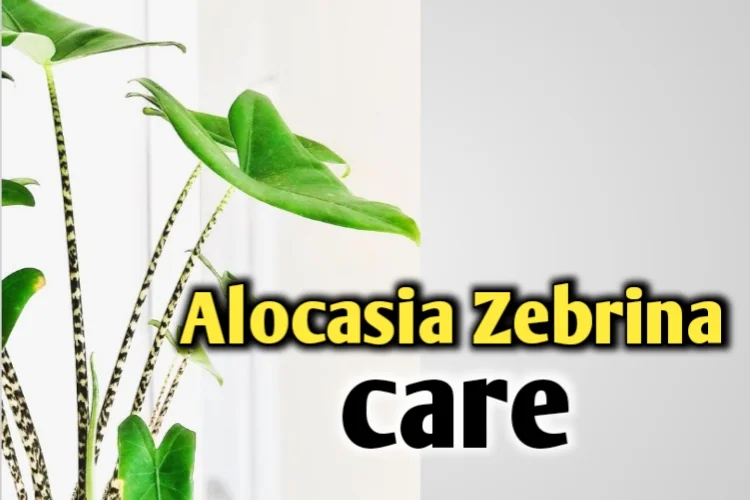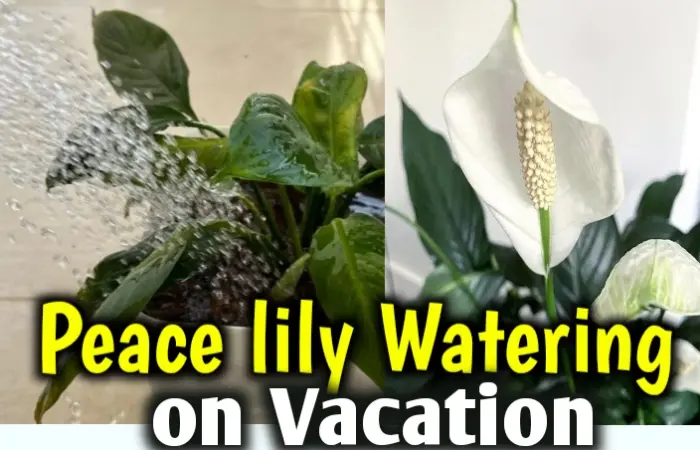20+ Lipstick plant varieties with names & pictures
Are you interested in lipstick plant varieties? Last week my friend was showing me a plant that has bushy green foliage and asked me why this plant is named after the lipstick plant? I was perplexed at that time as I didn’t know about it before. But after huge research, I got the fact of lipstick plant.
Aeschynanthus radicans, commonly known as lipstick plants is a plant native to Southeast Asia. As this plant consists of red flowers that have the structure of tube-like lipstick, this is called a lipstick plant. Due to its aristocracy, researchers have released around 100 varieties of this species.
Some of these varieties are widely found. Here, we have brought such common cultivars of the lipstick plant family.
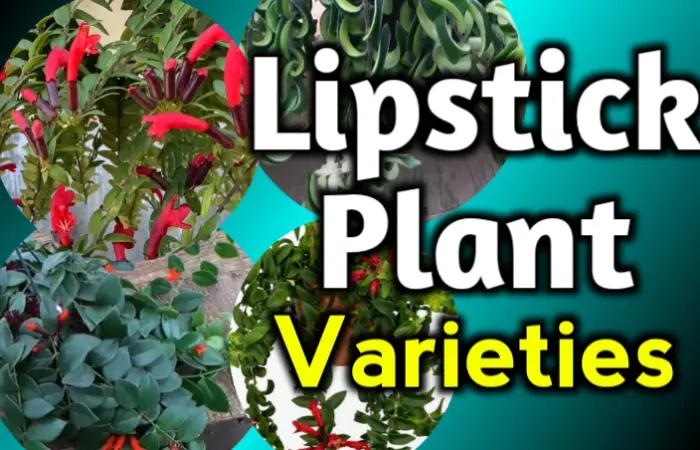
Lipstick Plant Varieties
Lipstick plants have a wide range of cultivars due to their extraordinary red-colored flower. There are many variations in foliage that brought out such varieties. Let’s get detailed information about them.
Mona Lisa Lipstick Plant
Mona Lisa lipstick plants are best suited to hanging pots as they have trailing vines. They can grow up to 2 feet or almost 60 cm.
They have green oval-shaped leaves that are mostly dark green on the upper side and light green on the lower side. The leaf surface is waxy and succulent.
You can find the plant full of red and orange flowers that resemble red lipstick tubes. The flowers are small and tubular and have a pungent fragrance. Blooming normally occurred in the Spring and Summer time but this depends on the intensity of sunlight.

Twister Lipstick Plant
This plant can grow up to 20-60 cm according to its favorable condition. The trailing vine with elongated leaves is appreciable to be placed as a unique creature.
The leaves are dark green and pointed and twirled. The flowers are red and produced single. Spring is the blooming time. Mainly, they are at extra concentration points because of their twisted leaves.

Thai Pink Lipstick Plant
Thai pink is another elegant variety of lipstick plant family. This trailing epiphyte almost grows up to 1.5 meters long. The leaves are heart-shaped, dark green and are oppositely arranged.
The flowers are tube-like structures that are pale pink colored. This also has its blooming in Spring.

Gracilis Lipstick Plant
Gracilis lipstick plant has branched vines of which all branches are almost the same size. The vine is brownish and the leaves are light green. Leaves are oppositely arranged and oval-shaped.
In the spring, plenty of red tubular flowers appear in these plants. Gracilis seem like very tidy plants, not densely foliated or branched.

Haconanthus Lipstick Plant
Haconanthus is a rare variety of lipstick plant cultivars. The vines are soft and brownish. Tender vines mound a little but after getting matured, they trail downside.
The leaves are lanceolate and dark green. Venation in the leaves is well expressed and red flowers are seen in the blooming time of Spring.

Purple Star Lipstick Plant
This plant has some extraordinary features that are not comparable to other lipstick plants and that is its upright growth.
Where lipstick plants’ trailing vines come downward, these purple star stems enhance in an upward direction that is well established in a pot.
The leaves are lanceolate shaped and dark green. Red flowers are found in the apex of the stems while blooming time.

Variegated Curly Lipstick Plant
This variety is much like a twister lipstick plant. But if you put a closer view, you can see that the entire leaf is almost oval. Only the pointed part or apex of the leaf is whirled and this makes the difference with the twister plant.
The leaves are light yellow to yellowish-green or light pinkish and the trailing vines come out from different places as branches. The occasional blooming of orange-red flowers will be available in spring.

Variegated Mona Lisa Lipstick Plant
This cultivar is undoubtedly one of the prettiest members of the lipstick plant family. As it is a variegated form of the mona lisa plant, it has many similarities with that except the foliage color.
The trailing vines are well-decorated with a combination of pinkish green and light green leaves that are oval-shaped and broader than the mona lisa plant. The flower appears in spring which gives reddish look to the plant.
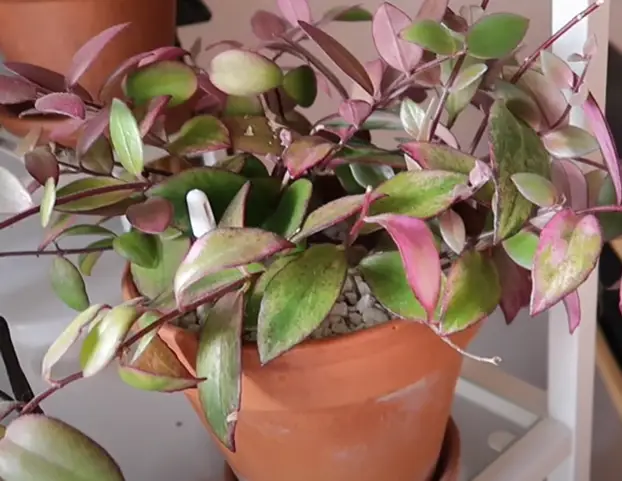
Black Pagoda Lipstick Plant
Aeschynanthus longicaulis or zebra basket vine is different than other lipstick plants. Their main center of attraction remains in their outstanding leaves.
The leaves are dark green on the upper side. But on the underside, purplish strips are present. that gives it a special look. The leaves are larger than the common lipstick plants and mottled.
They also bloom in spring but the flowers are less shiny than other lipstick flowers. The flowers are yellow or green.

Ramblin Lipstick Plant
This variety has a plant height of 20-60 meters. These perennial epiphytes are well adjusted in the hanging pots due to their trailing vines.
The leaves are dark green, elongated and 4-5 cm long. The leaf margins are hairy and tender leaves appear light green. The flowers are dark red seen in the spring.

Flearly Mona Lisa Lipstick Plant
This presents another form of the mona lisa lipstick plant. Here, you will again get some variations in the structure of the leaves despite the leaf color being dark green.
The leaves are oval but are a little wavy in the apex. They are almost 5-7.5 cm long having a shiny and waxy surface. They also produce yellowish flowers. Flowers are almost 4.5-5 cm long.
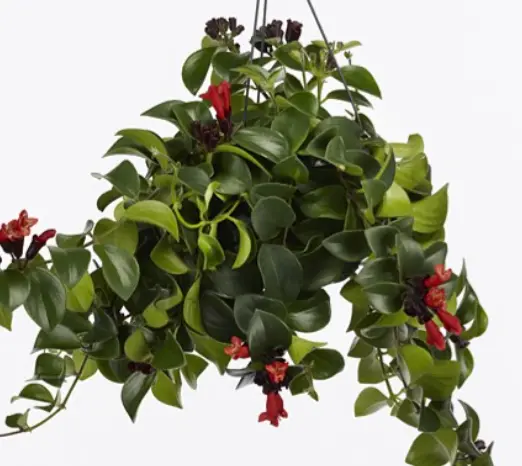
Rumba Lipstick Plant
Rumba differs from the other cultivars because of its hairy leaf surface. The other lipstick plants are smooth but this plant shows some hairy extension on its leaf surface.
The vines of this plant also grow up to 20-60 cm. The lanceolate and dark green leaves can grow almost 3-4 cm long. The flowers are dark red and blooming occurs in the summer and spring.

Bolero Bicolore Lipstick Plant
Like the other lipstick plant varieties, bolero bicolore also has trailing vines of nearly 20-60 cm. You can distinguish this plant from other lipstick plants in two ways. Their leaves and flowers.
The lanceolate leaves are more gentle green and more slender than other varieties as it is only 1 cm in width. The leaf surface is smooth but the leaf margin is hairy. The flowers are red and purplish red. The dark purple tint makes them more exceptional to others.

Rasta Lipstick Plant
Somewhat, you may confuse the rasta plant with twister or variegated curly leaves. But here you have to be tricky in foliage judgment.
The leaves of rasta are twirled but they don’t roll each other. The two points of each leaf seem to be attached. The matured leaves remaining on the lower side of the vines are dark green and the tender leaves are light green to yellow.
Again the flowers are red and they are seen in spring. But they are unscented. The leaves are found at the apex of each vine.
Rasta XL Lipstick Plant
This is another form of rasta lipstick plant. Comparatively fewer branches are seen in the rasta xl plant. The leaves are larger and less twisted than rasta.
The leaf color of rasta xl is also different as the tender leaves are emerald or gentle gree. The matured leaves are dark green but that is not much blackish like a rasta.
As an updated form of rasta, this plant also produces red flowers and they have no fragrance.

Cassiopeia Lipstick Plant
Here, you may find some similarities with the mona lisa plant. But a closure inspection will remove your confusion. The vines of cassiopeia are less bushy and the plant size is a little smaller than the mona lisa plant.
The leaves are oval but elongated which is similar to lanceolate. The petiole, as well as overall leaf lamina, is thick and the leaf surface is waxy and smooth. Flowers are red and found in bunches forming in maroon buds.

Caroline Lipstick Plant
Caroline lipstick plant is exceptional because of its leaf arrangement. Though they have trailing vines that hang downside in a hanging pot, their leaves are arranged in an upward direction. Just like birds are supposed to be flying.
The leaves of the whole plant are dark green and oppositely arranged. The leaves are pointed or acuminate. The vines take a bushy appearance. Red flowers are found to appear in spring.

Twister XL Lipstick Plant
Twister xl is another form of twister plant that is much similar to the twister lipstick plant. The main difference remains in the foliage part.
The leaves are dark green and large up to 4 to 5 cm. The leaf surface is hairy and ovate-shaped. Flowers are red-colored and larger than most of the lipstick plant varieties. The flowers are almost 5.5 to 6 cm long and blooming occurs in spring.

Pink Polka Lipstick Plant
Pink polka can be easily differentiated from the other lipstick plants by its flower and leaf structure. The vines are decorated with dense foliage that is 20-60 cm long.
The leaves are arranged in such a way that they look placed one after one. They have a tiny petiole The flowers are pink colored and bloom in spring.

Tessa-Lee Lipstick Plant
Finally, we are ending with the variety of tessa-lee. The vines can grow almost 60 cm. The branches are arranged randomly and bushy.
The leaf size is almost 5-7.5 cm. The leaves are oval-shaped and dark green when matured and tender leaves are light green. Blooming occurs in Spring and the flowers are dark red. They are single flowers but when they are perfectly bloomed, they seem to be borne in clusters.

Benefits of Lipstick Plant
Besides being a beautiful houseplant, the lipstick plant has so many advantages. Check them below-
- First of all, the lipstick plant can be used for ornamental purposes. You can decorate your room corner or home garden with any of these varieties.
As blooming is much more ensured than other types of succulents, you can easily get a charming look every year at a certain time in your place. It will help soothe your mind and keep you calm after a stressful day.
- It can be considered one of the best oxygen-supplying plants. It can produce a great amount of oxygen. Hence, it is one of the best choices as a bedroom plant.
- The lipstick plant is very easy to care for and maintain. It is enough drought resistant because of its fleshy leaves. As a consequence, you can care for a lipstick plant in a few seconds without much expenditure.
- It purifies air by removing toxic gases from the air and creates a mild scent when bloomed.
- This plant is considered a luck-bringing plant that improves your concentration at work and brings prosperity.
Lipstick Plant Care
Lipstick plants don’t require many things for growing. Just you have to follow some basic rules for their development. Maintain the following points perfectly-
- Soil- Soil should be sandy loam and well mixture with perlite, Coco peat, sphagnum moss etc. materials.
- Sunlight-Moderate amount of sunlight but that should be indirect.
- Watering-Watering should be enough when the soil is dry. But waterlogging conditions should not arise as it increases fungal growth.
- Temperature- 60° to 80°F is optimum for lipstick plant growth. It cannot tolerate the cool temperature. If the temperature goes below 55°F, it becomes deteriorating for lipstick plants.
- Humidity- Humid environment is necessary when blooming time comes. For flower production, watering and humidity are two crucial factors.
- Fertilizers-You can use dilute fertilizers once a month in the growing stage.
- Pruning- Pruning is done once a year for the vigorous growth of the plant.
Final Thoughts
After the discussion of varieties, we have come to the endpoint. Though lipstick plants have many varieties, they differ from each other in some little points. The flowering pattern is almost the same in all the plants. You can make difference only by seeing the foliage parts that are described here.
Because of their red flowers, they have gotten many popularities in the common world and researchers are trying to release more new varieties. So, take one of them and fulfill your garden collection.
FAQs
1. Is lipstick plant rare?
Yes! Lipstick plants are rare as they grow only in a certain range of temperature. You can’t find them in temperate countries.
2. Is lipstick plant poisonous?
No! the Lipstick plant is not poisonous to human beings or pets. You can safely put it in any place in your house.
3. Is the lipstick plant an indoor plant?
Yeah! It is an indoor plant that is placed in hanging pots or hanging baskets. Due to its trailing vines, it can grow well in such pots.

